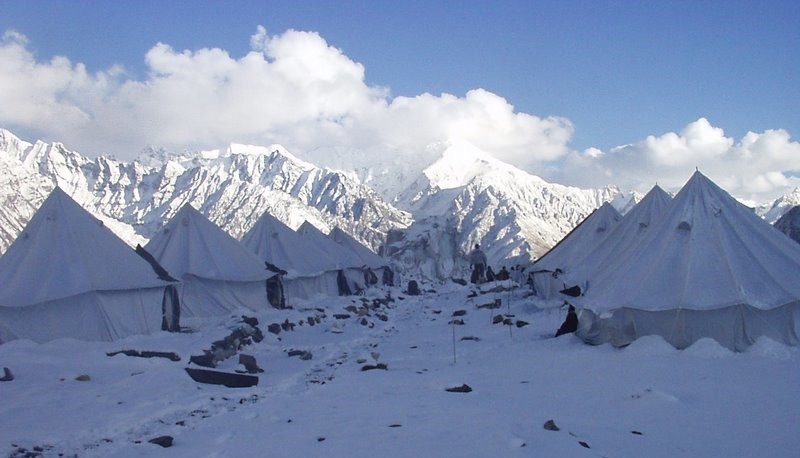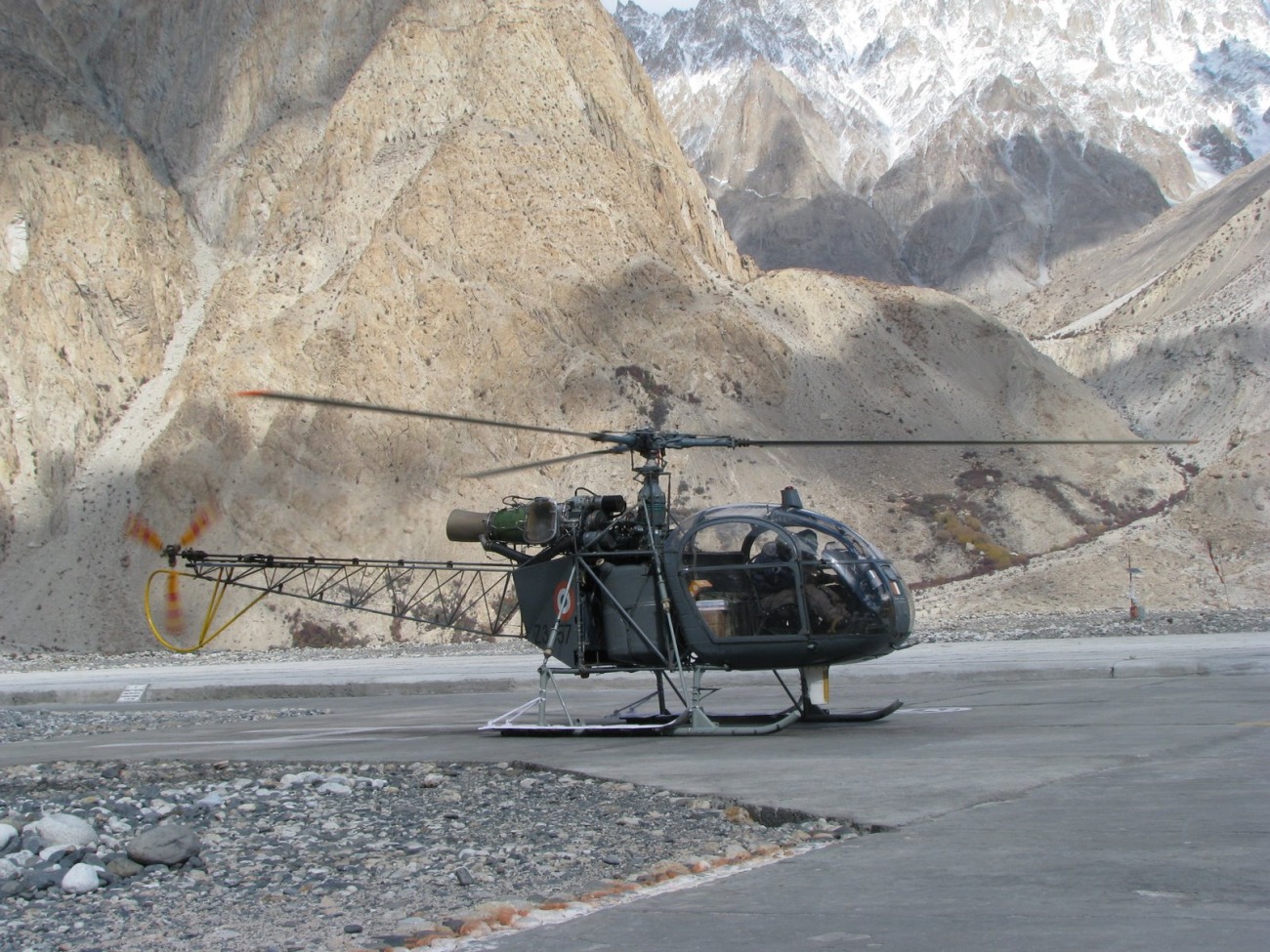On 7th April 2012, at least 129 Pakistani Army soldiers died after getting buried under 80 to 100 feet of snow when an avalanche hit their military base in the Gayari sector. The incident occurred at an altitude of over 4500 meters and was the worst avalanche that the Pakistani Army had ever experienced.
The battalion headquarters of the 6th Northern Light Infantry, located 15,000ft in Kashmir’s Gayari district, near the border with India, was hit by an avalanche at around 06:00 local time on 7 April. Although rescue efforts began shortly after news of the avalanche, freezing and strenuous conditions made rescuing any of those trapped practically impossible.
On 29 May 2012, Pakistan declared that 129 soldiers and 11 civilians were buried dead.
The Backdrop – Siachen Glacier
Siachen is the world’s highest battlefield, where soldiers of both India and Pakistan brave freezing temperatures that go as low as -60 degrees Celsius.
‘Raptor Salad’ For Lunch! US F-22 Raptor Outgunned, Outmaneuvered By German Eurofighter Typhoon?
Both India and Pakistan lay claim to Siachen and have deployed thousands of troops on the glacier. Both nations fought over the region intermittently from 1984 onwards until 2003, when a ceasefire was declared.
The Siachen conflict is part of the larger conflict over Jammu and Kashmir between India and Pakistan. After both countries became independent republics, they soon became embroiled in a war over the region.
After a ceasefire was declared, India and Pakistan agreed to the Line of Control starting from the southernmost point west of Chenab and ending northeast at point NJ9842. From this point, the line was to run further north, meeting the China border.
However, due to inaccessible glacial terrain, no effort was made to extend the line from NJ9842 to the China border. This undefined area of the Siachen Glacier became the bone of contention between the two nations.
From 1970 onwards, Pakistan allowed mountain climbers to visit the glacier, giving the impression that the region belonged to Pakistan. A German climber showed the map to an Indian Armyman, Col. Navin Kumar, who soon forwarded it to the director-general of military operations.
F-16s “Sitting Ducks” For Russian MiG-31 Fighters? Putin Warns Of Consequences Over Fighting Falcons
The map obtained from the German national convinced India that Pakistan was slowly trying to take over Siachen. As a result, the Indian Army ordered a complete mapping of the area and tasked Col Navin Kumar to take counter-action.
Pakistan, alarmed by India’s activity, decided to seize Siachen. Had it not been for some crucial intelligence that India received at a critical time, Pakistan might as well have succeeded.
Years later, Col Kumar said that they had learned from their source in London that Pakistan was buying large numbers of mountaineering gear. Unfortunately for Pakistan, the supplier from whom they were acquiring the gear also provided the same to the Indian Army.
As soon as India learned about the development, New Delhi dispatched its troops and secured Siachen just four days before Pakistan, on 13 April 1984.

Gayari Avalanche
Although India and Pakistan both have abided by ceasefire, both nations have lost nearly 3000 soldiers combined, apart from millions of dollars. The soldiers stationed at these punishing heights have to battle harsh climatic conditions, frostbites, hypothermia, and amnesia, to name a few.
Avalanches are nothing new to Siachen. The Gayari avalanche was one of the worst avalanches to have hit the Pakistan Army and claimed the lives of 129 soldiers and 11 civilians.
Pakistani Army immediately commenced rescue operations using helicopters, heavy machinery, and sniffer dogs. With assistance from international rescuers, after a prolonged effort, they only managed to recover the bodies of the soldiers.
Prior to the Gayari avalanche, another avalanche had struck in 2010 that claimed the lives of 24 Pakistan Army soldiers. On April 7, 2002, at around 2 am, an avalanche hit the Pakistani Army base at Gayari, which was a vital supply hub for troops placed in the remotest parts of the Siachen glacier. The devastating avalanche struck at a distance of just 1300 meters from the camp.
While the exact cause of the avalanche was not known, many conspiracies had started to float including some blaming India for the disaster. The most accepted view among Pakistanis was that the avalanche was triggered after a piece of the main glacier had broken off, which obliterated the camp.

Another view suggested that it was not an avalanche but a landslide caused by heavy rains that loosened some of the soil of the mountain.
However, one of the Pakistani newspapers claimed that the Indian Army was behind the disaster. The newspaper suggested that increased solar radiation due to large carbon deposits resulting from increased Indian military activity melted the ice at the glacier, causing the avalanche.
Another conspiracy theory pointed to an Indian project, Kali, which melted the ice that caused the avalanche under Project – Whitewash.
The Gayari base is situated in a valley between two high mountains. “I can’t comprehend how an avalanche can reach that place. It was suppose to be safe,” a Pakistani army official had said.
The then-PM of Pakistan, Yousuf Raza Gilani, expressed shock over the incident and said that the accident would in no way hurt the morale of the soldiers and officers. A retired Pakistani Brigadier, Shaukat Qadir, speaking to Al Jazeera, pointed out that this was the biggest incident in terms of casualties.
The Human Rights Commission of Pakistan also expressed its sorrow and extended condolences to the families of the victims. The body had called for an exhaustive investigation into the living conditions of soldiers placed at Siachen Glacier.
Even the then-PM of India, Manmohan Singh, offered to help Pakistan in relief and rescue operations.
- By: ET Digital Desk
- With Inputs from the BBC





